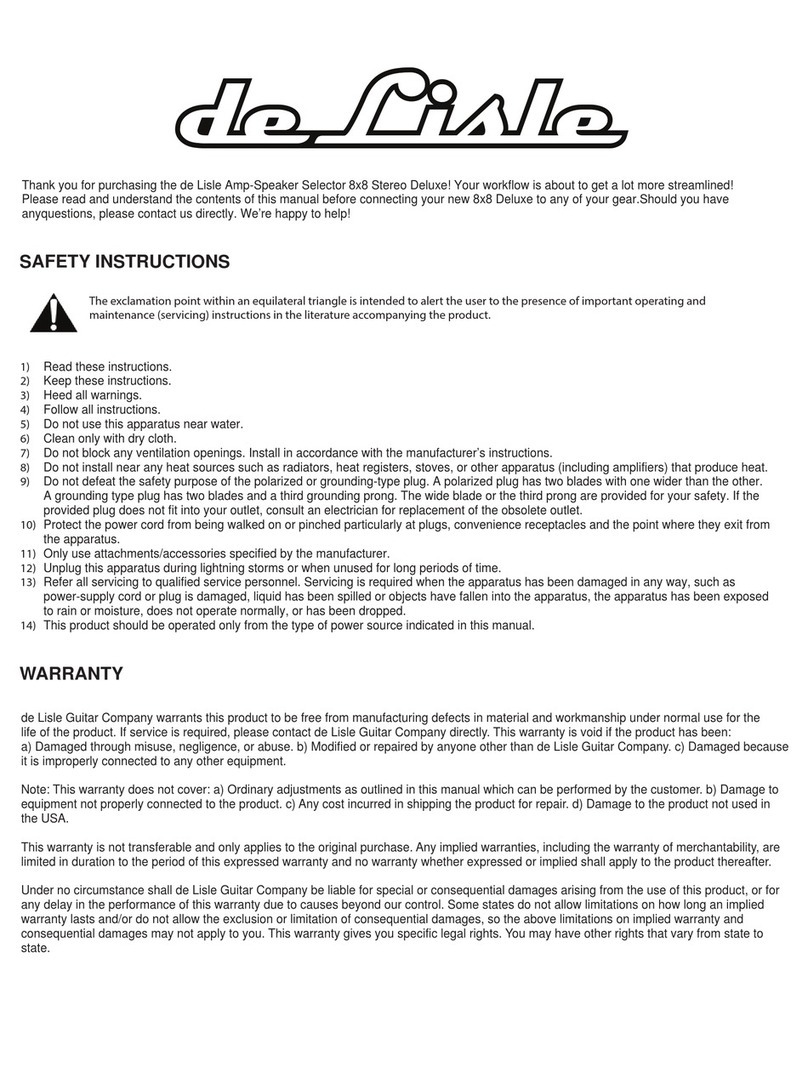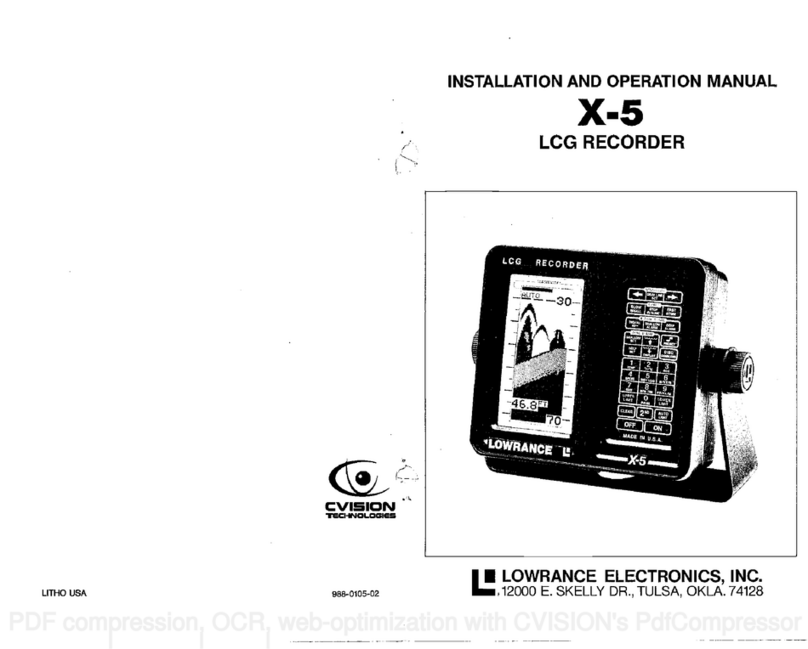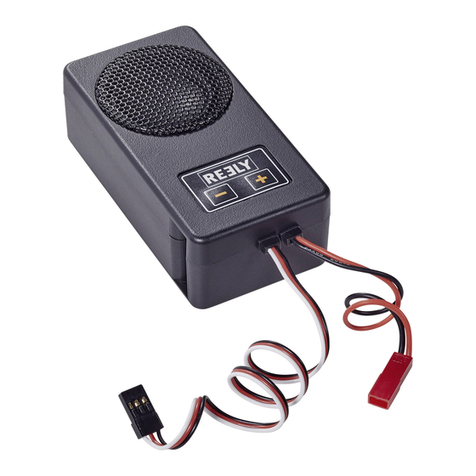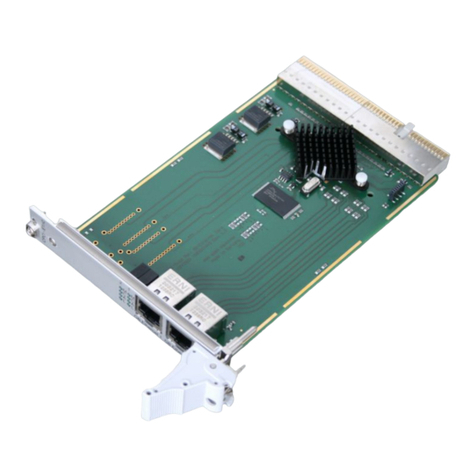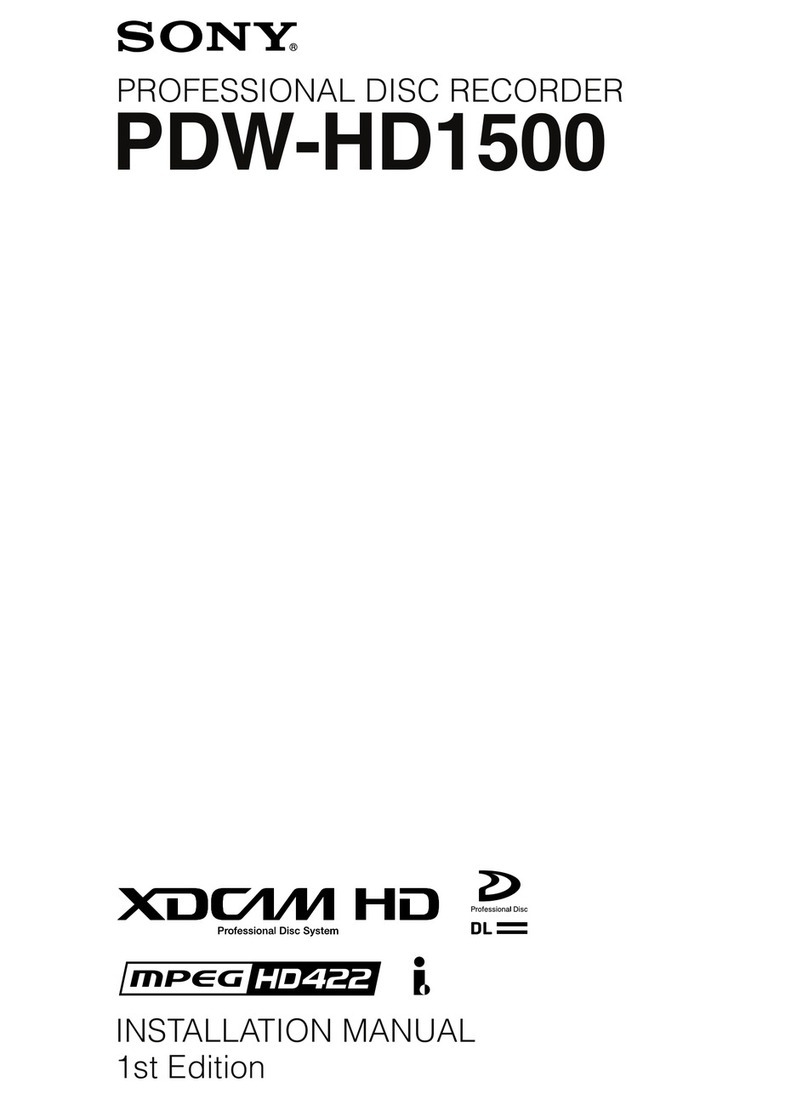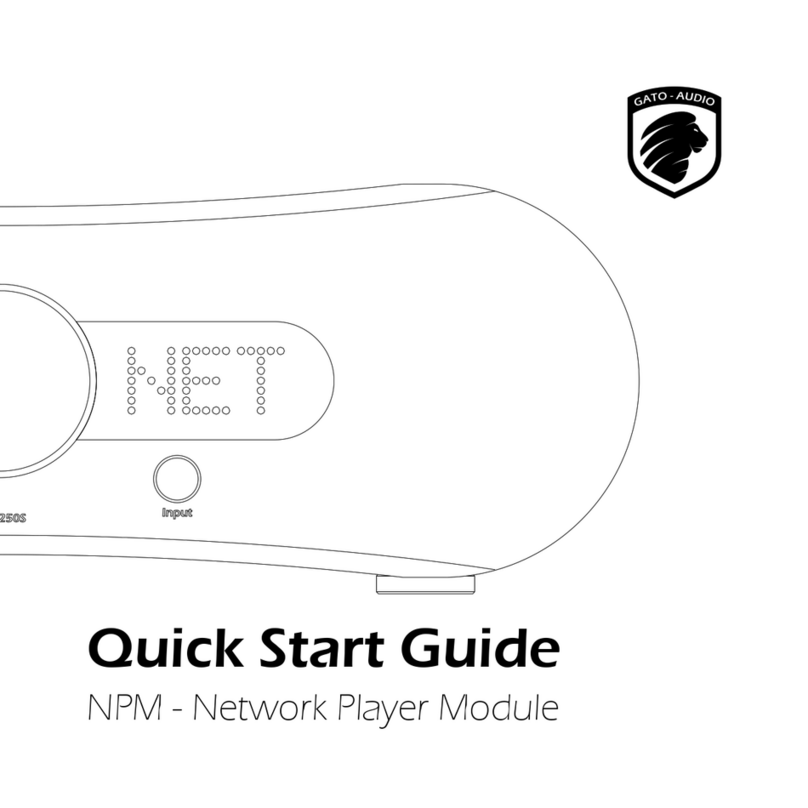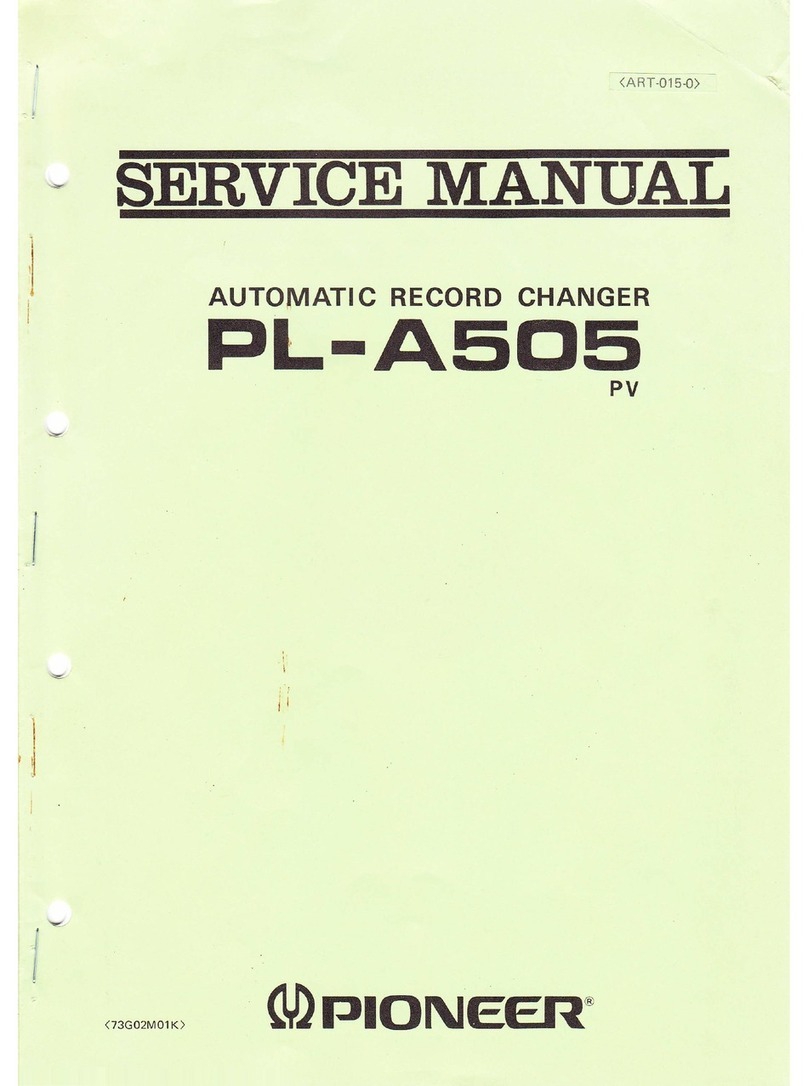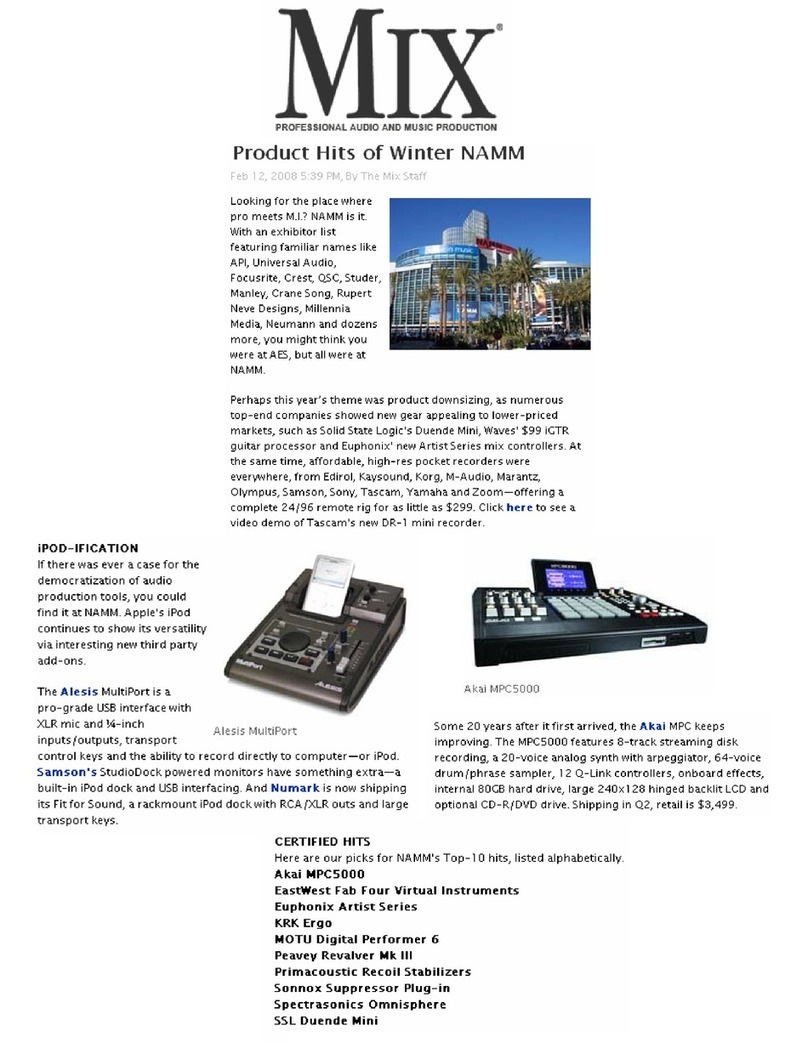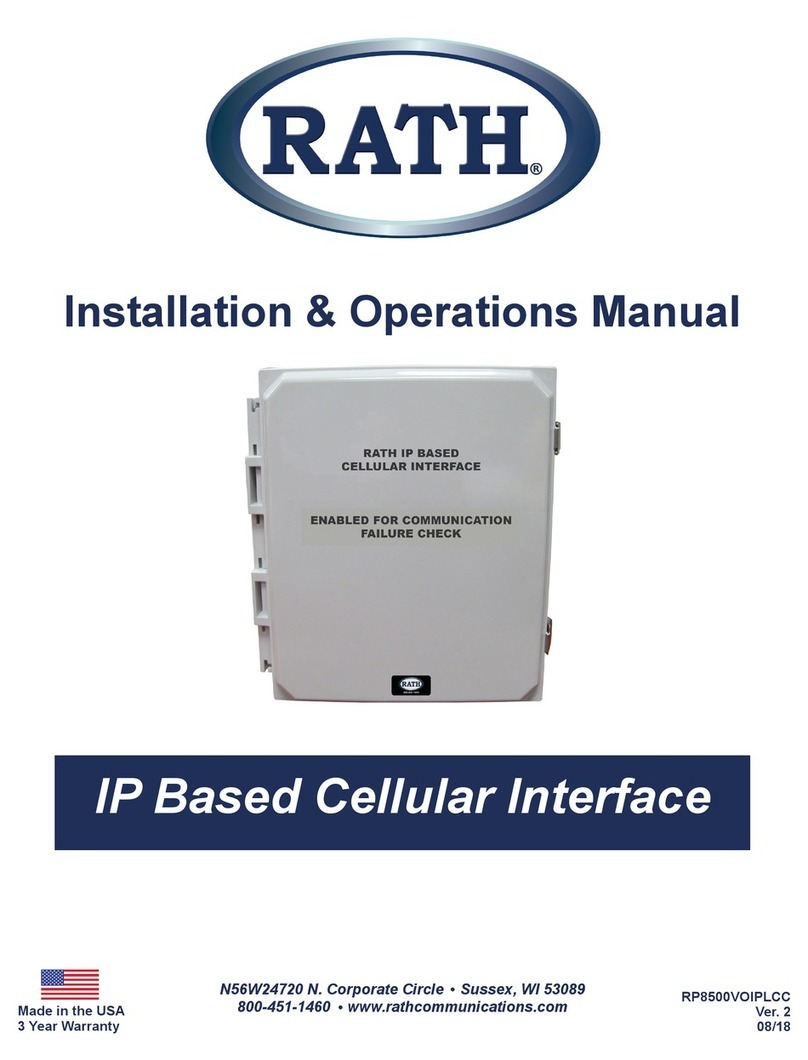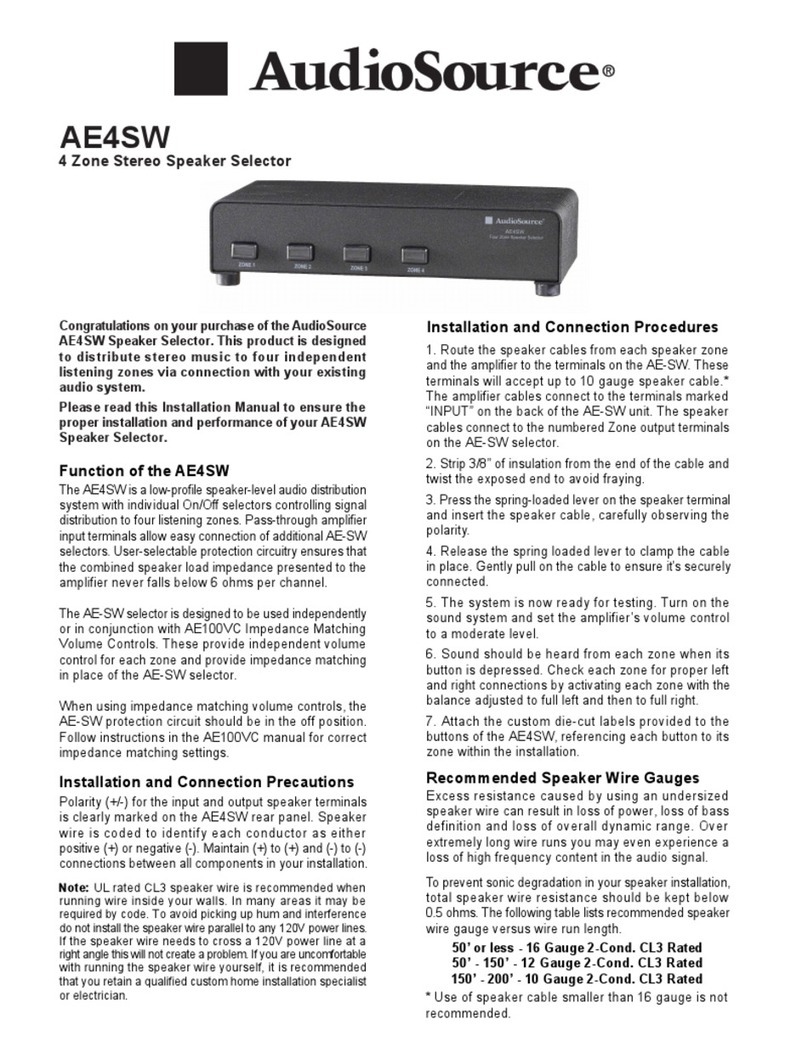De Lisle Amp-Speaker Selector 8x8 with Reactive Attenuator IR... User manual

Thank you for purchasing the de Lisle Amp-Speaker Selector 8x8 with Reactive Attenuator and IR Loader! Your workflow is about to get a lot
more streamlined! Please read and understand the contents of this manual before connecting your new Amp-Speaker Selector to any of your
gear. Should you have any questions, please contact us directly. We’re happy to help!
The exclamation point within an equilateral triangle is intended to alert the user to the presence of important operating and
maintenance (servicing) instructions in the literature accompanying the product.
1)
2)
3)
4)
5)
6)
7)
8)
9)
10)
11)
12)
13)
14)
Read these instructions.
Keep these instructions.
Heed all warnings.
Follow all instructions.
Do not use this apparatus near water.
Clean only with dry cloth.
Do not block any ventilation openings. Install in accordance with the manufacturer’s instructions.
Do not install near any heat sources such as radiators, heat registers, stoves, or other apparatus (including amplifiers) that produce heat.
Do not defeat the safety purpose of the polarized or grounding-type plug. A polarized plug has two blades with one wider than the other.
A grounding type plug has two blades and a third grounding prong. The wide blade or the third prong are provided for your safety. If the
provided plug does not fit into your outlet, consult an electrician for replacement of the obsolete outlet.
Protect the power cord from being walked on or pinched particularly at plugs, convenience receptacles and the point where they exit from
the apparatus.
Only use attachments/accessories specified by the manufacturer.
Unplug this apparatus during lightning storms or when unused for long periods of time.
Refer all servicing to qualified service personnel. Servicing is required when the apparatus has been damaged in any way, such as
power-supply cord or plug is damaged, liquid has been spilled or objects have fallen into the apparatus, the apparatus has been exposed
to rain or moisture, does not operate normally, or has been dropped.
This product should be operated only from the type of power source indicated in this manual.
SAFETY INSTRUCTIONS
WARRANTY
de Lisle Guitar Company warrants this product to be free from manufacturing defects in material and workmanship under normal use for the
life of the product. If service is required, please contact de Lisle Guitar Company directly. This warranty is void if the product has been:
a) Damaged through misuse, negligence, or abuse. b) Modified or repaired by anyone other than de Lisle Guitar Company. c) Damaged because
it is improperly connected to any other equipment.
Note: This warranty does not cover: a) Ordinary adjustments as outlined in this manual which can be performed by the customer. b) Damage to
equipment not properly connected to the product. c) Any cost incurred in shipping the product for repair. d) Damage to the product not used in
the USA.
This warranty is not transferable and only applies to the original purchase. Any implied warranties, including the warranty of merchantability, are
limited in duration to the period of this expressed warranty and no warranty whether expressed or implied shall apply to the product thereafter.
Under no circumstance shall de Lisle Guitar Company be liable for special or consequential damages arising from the use of this product, or for
any delay in the performance of this warranty due to causes beyond our control. Some states do not allow limitations on how long an implied
warranty lasts and/or do not allow the exclusion or limitation of consequential damages, so the above limitations on implied warranty and
consequential damages may not apply to you. This warranty gives you specific legal rights. You may have other rights that vary from state to
state.

CONNECTIONS:
SWITCHING:
SPEAKER
AMP OUTPUT
ATTN OUT
ATTN IN
IR
12VDC
AMP INPUT
Connect to your speaker cabinets.
Connect to the speaker output jacks of your amplifiers.
Connect to an external attenuator’s output jack (e.g. “To Speaker”). Use this
connection only if you have connected an attenautor to the ATTN IN jack.
Connect to an external attenuator’s input jack (e.g. “FromAmplifier”).
Connecting an external attenuator will disable the internal reactive attenuator,
Speaker Mute switch and the IR function of the Amp-Speaker Selector.
Sends to selected impulse response signal to your recording interface. Use a
TS cable for unbalanced output or TRS for balanced.
Use only 12VDC 300mA or higher current center negative power supplies.
Should you hear any “whining” or see dimming of the LED when functions are
switched, the power supply is not able to deliver enough current for the switch
to function properly.
Connect to the input jacks of your amplifiers.
INPUT
POWER
LED
AMPLIFIER
Connect your guitar or pedalboard output here.
The power switch has three positions. When in the OFF position, no power is applied
to the device. DIRECT takes the front panel input and sends it directly to the input
of the selected amp, bypassing any additional circuitry. This is the position for normal
use. ISO, for ISOLATED, sends the input signal through an isolation transformer. This
can be used to eliminate ground loops or when a low impedance output is desired.
The LED indicator lights up when power is applied.
Rotate to select the desired amplifier. The INPUT jack on the front panel will be
connected to the corresponding AMP INPUT jack on the rear panel. The AMP
OUTPUT jack will be connected to the selected SPEAKER or theATTENUATOR if
it is active. All unused amps are muted at their inputs, switched to protective loads.
AMP INPUT
SPEAKER
AMP OUTPUT
ATTEN OUT ATTEN IN IR
5 6 7 8 5 6 7 8 5 6 7 8

make or break any rear panel cable connections with any devices powered on.
exceed the maximum power rating of the device.
leave cables unsupported on the back of the device.
place the device near large magnetic fields such as power transformers. Doing so
may induce a voltage in the isolation transformers which will be heard as hum.
use improper cables. Be sure to use instrument cable for AMP INPUT, D.I. and the
front panel INPUT connections. Use speaker cable for theAMP OUTPUT, SPEAKER,
ATTENUATOR IN, andATTENUATOR OUT connections.
DO NOT
DO NOT
DO NOT
DO NOT
DO NOT
PRECAUTIONS
SWITCHING (CONTINUED):
GROUND
ATTENUATOR
IR LEVEL
IR GROUND
IR CABINET
SPEAKER
SPEAKER MUTE
SIGNAL LED
USB CONNECTOR
The GROUND switch is only active in ISO mode. In the right position, an
isolation transformer is in circuit to help prevent ground loops with any
other connected devices. In the left position, the transformer is bypassed
entirely and an op-amp buffer provides a low impedance output.
To activate the internal reactive attenautor or an externally connected
attenuator, place the attenuator switch in the ON position. The level of the
internal reactive attenuator can be adjusted with the corresponding rheostat.
Make sure the amplifier is set to 8 Ohms or you have connected the AMP
OUTPUT jack to the 8 Ohm output of your amp. You may then use any 16, 8
or 4 ohm cabinet with the reactive attenuator without changing the
impedance setting at the amp.
UNDERSTANDING HOW THIS DEVICE WORKS:
The amplifier sets the limit on “gain.” If the amplifier would be feeding
back and unstable at high volume without the attenuator connected, it will
still be feeding back and unstable at lower volume with the attenuator
connected. So, the attenuator does not allow the amp to exceed its inherent
stability. It still will feedback, oscillate and sound bad if pushed beyond its
limits.
Adjusts the output level of the IR when the attenuator is active.
The IR output is transformer isolated. Normally, this switch will be in the right
position. However, depending on which type of cable you use (TS/TRS), you
may find the need to ground the output by placing the switch in the left
position.
Rotate to the select the desired impulse response. (See last page.)
Rotate to the select the desired speaker cabinet.
The SPEAKER may be toggled On or Off for silent recording. This switch
works only when the internal reactive attenuator is active. WIth the SPEAKER
muted, you may hear the guitar faintly “singing” from the amplifier tubes or
the reactive load. This is normal.
This LED will illuminate when a signal is passing through the attenuator. This
helps as a visual indicator when the speaker is muted.
Used for loading or restoring impulse responses. (See the last page.)

SPECIFICATIONS
• Input Impedance: 1 Meg
• Output Impedance: 500 Ohm
• Input Sensitivity: +20 Vp-p
• Switching Time: 4-8ms
• Contact Resistance: 0.075 Ohm
• Power Consumption: 3.24W Max
• Guitar / Pedalboard Input (1)
• 3 Input Switching Options
• Isolation Transformer Bypass
• Attenuator Level
• Attenuator Bypass Switch
• Silent Recording Switch
• IR Cabinets (10 plus bypass)
• IR Level Control
• IR Ground Switch
• IRs: 24 bit, 44.1kHz, 1024 points (23ms)
• Active Signal LED
• USB Type-C
• Amplifier Input (8)
• Amplifier Output (8)
• Speaker Input (8)
INITIAL SETUP PROCEDURE
We recommend starting with one amp and checking your progress. With so many
cables, it can be easy to connect things incorrectly.
Be sure all devices are powered off before making any connections. Place the front
panel ATTENUATOR switch in the off position.
Connect a speaker cabinet to SPEAKER 1
Connect an amplifier’s speaker output to AMP OUTPUT 1.
Connect the same amplifier’s input jack to AMP INPUT 1.
If you have an external attenuator, connect its input to the ATTNINPUT jack and its
output to the ATTN OUT jack. Note: the attenuator will be bypassed while the front
panel ATTENUATOR switch is in the off position.
Connect your guitar to the front panel INPUT jack. Rotate the AMPLIFIER dial to
position 1. Rotate the SPEAKER dial to position 1.
Power on the Amp-Speaker Selector and then turn on your amplifier.
Listen for the guitar signal. If you hear it coming from the speaker, move on to 10. If
not, double check your cable connections as well as the amplifier and guitar volume
To test your attenuator, place the ATTENUATOR switch in the on position. Should the
sound disappear, check your cable connections as well as the attenuator output level.
Repeat the above steps as necessary to add the rest of your amps and cabinets.
1
2
3
4
5
6
7
8
9
10
11
• Attenuator Input (1)
• Attenuator Output(1)
• Transformer Isolation
• Internally Isolated DC Power Supply
• Increased Signal Headroom
• Silver Relay Contacts with Gold Overlay
• Protection Loads for Unused Amplifiers
• Auto Muting of Unused Amplifiers
• 2U Chassis with Laser Etched Panels
• 12VDC 700mA Power Supply Included
• Hand-Wired
• 100W Recommended Maximum Power
• Optimized for 8 Ohms
• Linearly Variable Attenuation to -22.5dB
• Reactive Load Box
• 80hz Resonant Frequency
• Premium US Made Inductors
• Use 16, 8 or 4 Ohm Cabs with the Attenuator
• 20hz-20Khz Transformer Isolated D.I.
• Lifetime Warranty

INCLUDED IMPULSE RESPONSES
01 Vox AC30
02 Marshall 1960AV
03 Marshall 2550
04 Orange PPC
05 Celestion Vintage 30
06 Tweed Bassman
07 Tweed Champ
08 Blackface Twin
09 Mesa Rectifier
10 Ampeg SVT
11 Bypass
LOADING THIRD PARTY IMPULSE RESPONSES
To load third part impulse responses, connect your computer to the front panel type C
USB port. Power on the Amp-Speaker Selector. It will be recognized by your computer as
a storage device, DELISLE IR.
Click on the storage device. Select all the original files and save them to a folder on your
computer in case you would like to restore them later.
Delete the file(s) you wish to replace. For example, if you like to replace 01 AC30 2x12.wav,
delete that file and replace it with “01 My New IR.wav.” Be sure to include the two digit
numerical position in the name of your new file otherwise it will not be recognized.
Delete FILELIST on the DELISLE IR storage device, eject the device from your computer
and then turn the Amp-Speaker Selector power switch off. When powered back on, your
new IR will be loaded in position 1.
Position 11 is left blank for a bypass position, but can be used as an IR.
IRs must be 44.1kHz 24 Bit 1024 samples. Should you need to convert third party IRs,
there is a free open source program available for that purpose. Scan the QR code below
to visit the project download page,
DE LISLE GUITAR CO.
49 BOONE VILLAGE
SUITE 167
ZIONSVILLE, IN 46077
http://www.delisleguitar.com
This manual suits for next models
1
Table of contents
Other De Lisle Recording Equipment manuals
